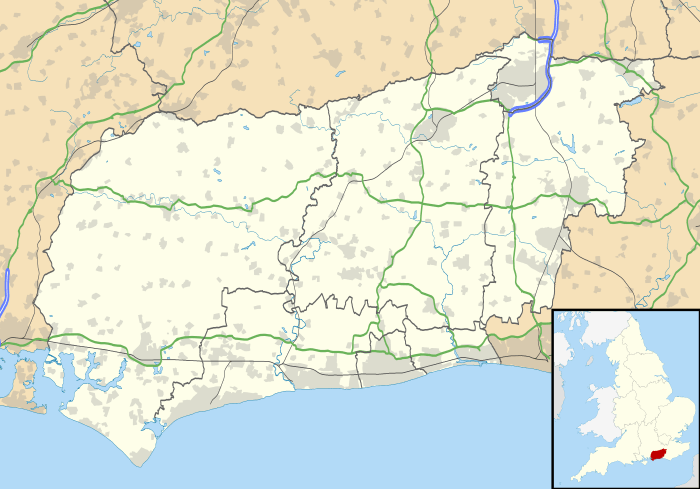Amberley Wild Brooks
| Site of Special Scientific Interest | |
 Location within West Sussex | |
| Area of Search | West Sussex |
|---|---|
| Grid reference | TQ033142 |
| Coordinates | 50°55′04″N 0°31′46″W / 50.917894°N 0.52956°WCoordinates: 50°55′04″N 0°31′46″W / 50.917894°N 0.52956°W |
| Interest | Biological |
| Area | 322.6 ha (797 acres) |
| Notification | 1954 |
| Natural England website | |
Amberley Wild Brooks is a wetland Site of Special Scientific Interest in the flood plain of the River Arun, just north of the village of Amberley, West Sussex, England. There is a path, which forms part of the Wey South Path, leading through the Wild Brooks from Amberley to Greatham Bridge near Coldwaltham. The area is now managed as a Nature reserve by the Sussex Wildlife Trust[1] and the Royal Society for the Protection of Birds.[2] It consists of grazing marsh, ditches and wet woodland and supports a large variety of wetland plants and insects. Over half of all the British species of aquatic plants can be found, as well as many rare invertebrates and breeding and wintering wildfowl.[3]
The English composer John Ireland wrote a piece for piano in 1921 called Amberley Wild Brooks, inspired by the natural beauty of the landscape; it was published as the second of Two Pieces for Piano.
References
- ↑ http://www.sussexwt.org.uk/reserves/page00006.htm
- ↑ http://www.rspb.org.uk/reserves/guide/a/amberleywildbrooks/index.aspx
- ↑ http://www.sussexwt.org.uk/uploads/amberley.pdf
"SSSI Citation — Amberley Wild Brooks" (PDF). Natural England. Retrieved 4 April 2009.